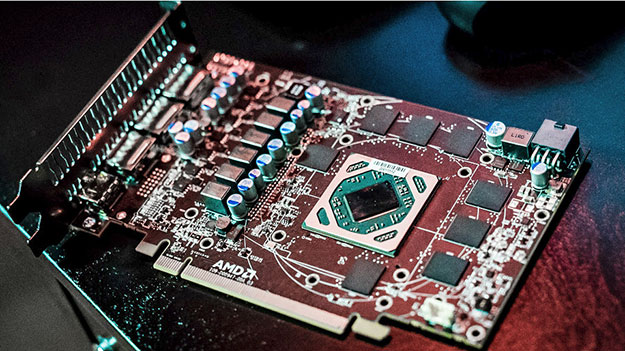AMD Radeon RX 470 Stripped Down To Bare Die, It's Tiny
It's shaping up to be an exciting summer for PC gamers. First NVIDIA threw down the gauntlet with its Pascal cards, the muscular GeForce GTX 1080 and GeForce GTX 1070, both of which are faster than a Titan X, and then AMD launched Polaris in mid-range form with the Radeon RX 480. Normally a mid-range part wouldn't be all that exciting, especially when the competition is wielding a couple of high-end solutions, but the Radeon RX 480 is making waves because of its price-to-performance ratio. It's based on a pretty remarkable GPU, one that's smaller than what you might have been expecting. Same goes for other Polaris parts AMD is planning to release in the near future.
Polaris is being built using both TSMC's 16nm and Globalfoundries' 14nm FinFET manufacturing processes, both of which are significantly smaller than the previous generation 28nm GPUs. FinFET is the key to everything that makes Polaris awesome, including its comparatively low power consumption. The FinFET process uses 3D structures that rise above the planar substrate, resulting in double the gate control compared to a traditional planar gate. It also allows for more on current and lower off current.
"The Polaris architecture precisely combines the latest 14nm FinFET process and AMD's advanced power, gating and clocking technologies for a superior cool and quiet gaming experience," AMD states on its Polaris microsite.
In the photo at the top of this article, you see a Radeon RX 470 that's been stripped of its heatsink and fan cooling system, courtesy of Josh Ray at Newegg. Ray attended a hosted event by AMD in which the Sunnyvale chip designer allowed him to spend some private time with several of AMD's new Polaris GPUs. Whereas the Radeon RX 480 is a $199 card that targets to VR, the Radeon RX 470 will likely be at least $50 cheaper and aimed at gamers who aren't necessarily interested in VR.
AMD's also prepping a Radeon RX 460 graphics card. While enthusiasts and power users are chomping at the bit for AMD to release a flagship card to compete with the GeForce GTX 1080, what AMD is doing makes a lot of sense from a financial standpoint. The majority of graphics card sold aren't in the high-end range, but in the $100 to $300 sector.


